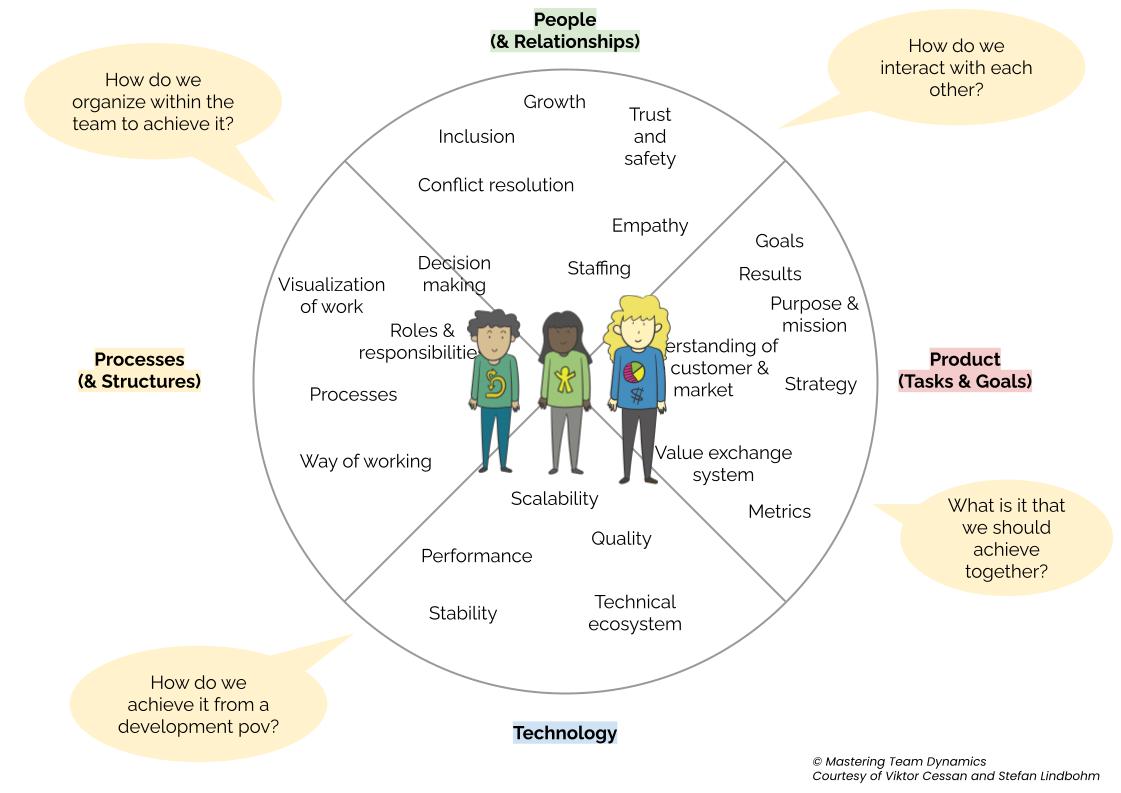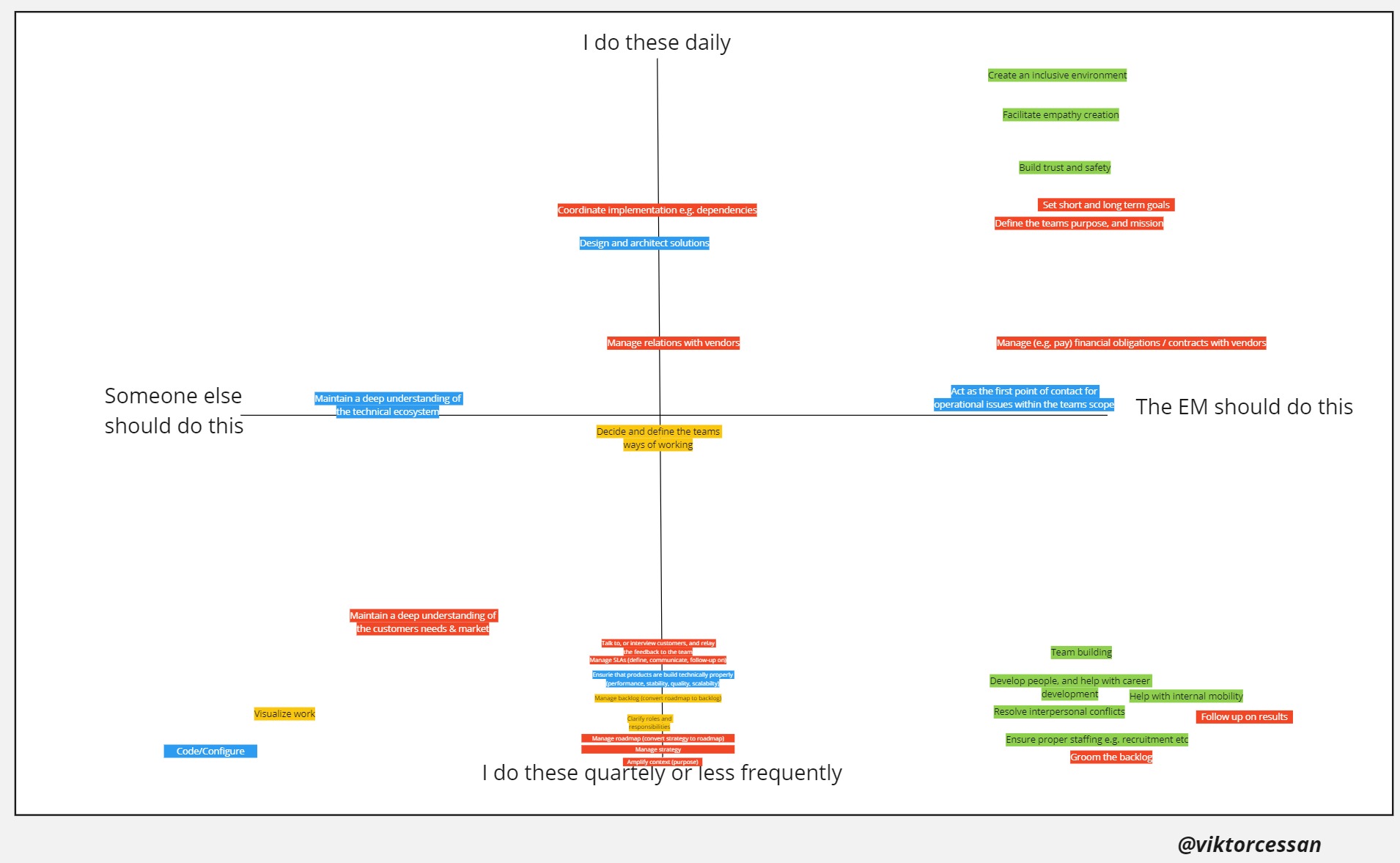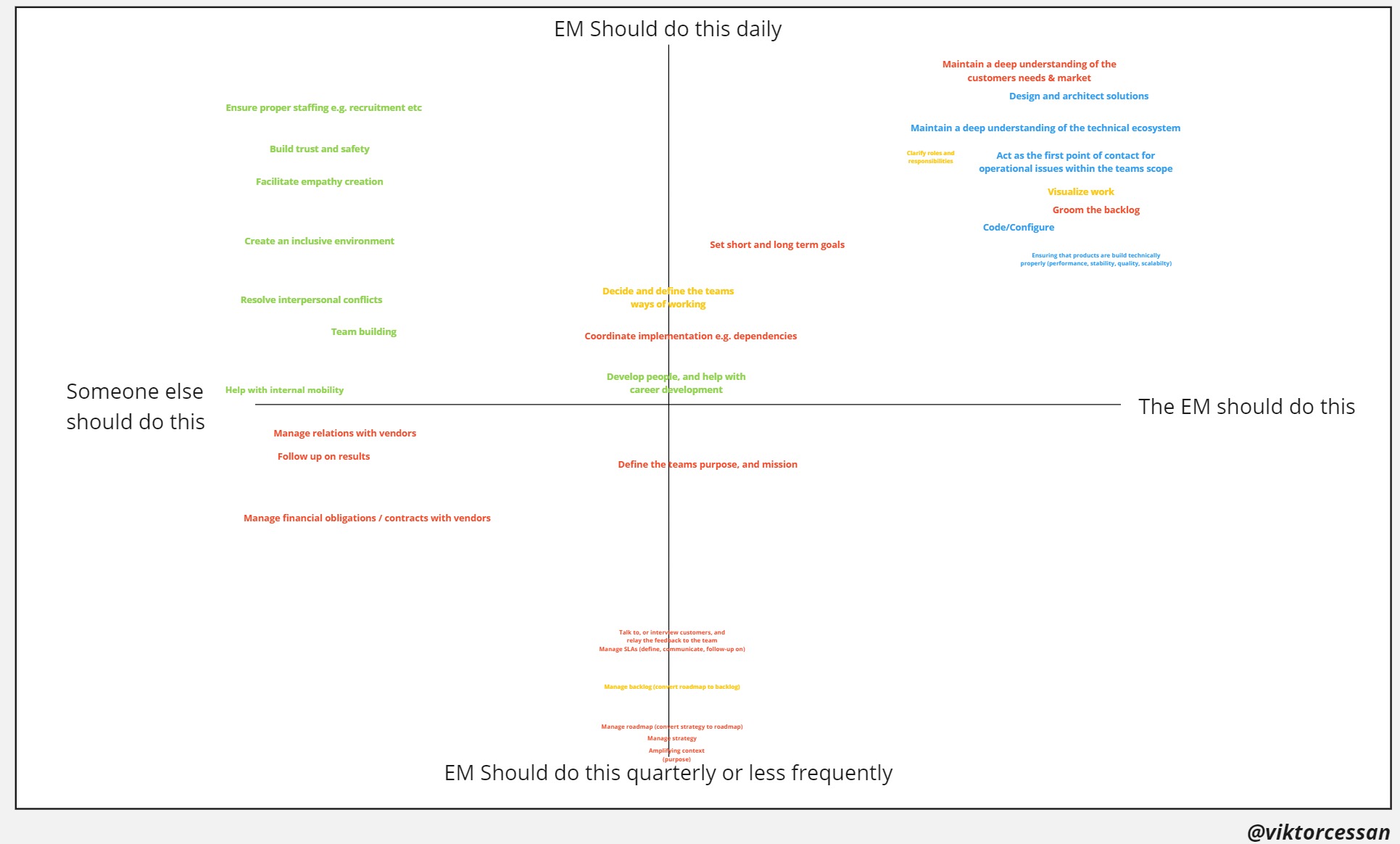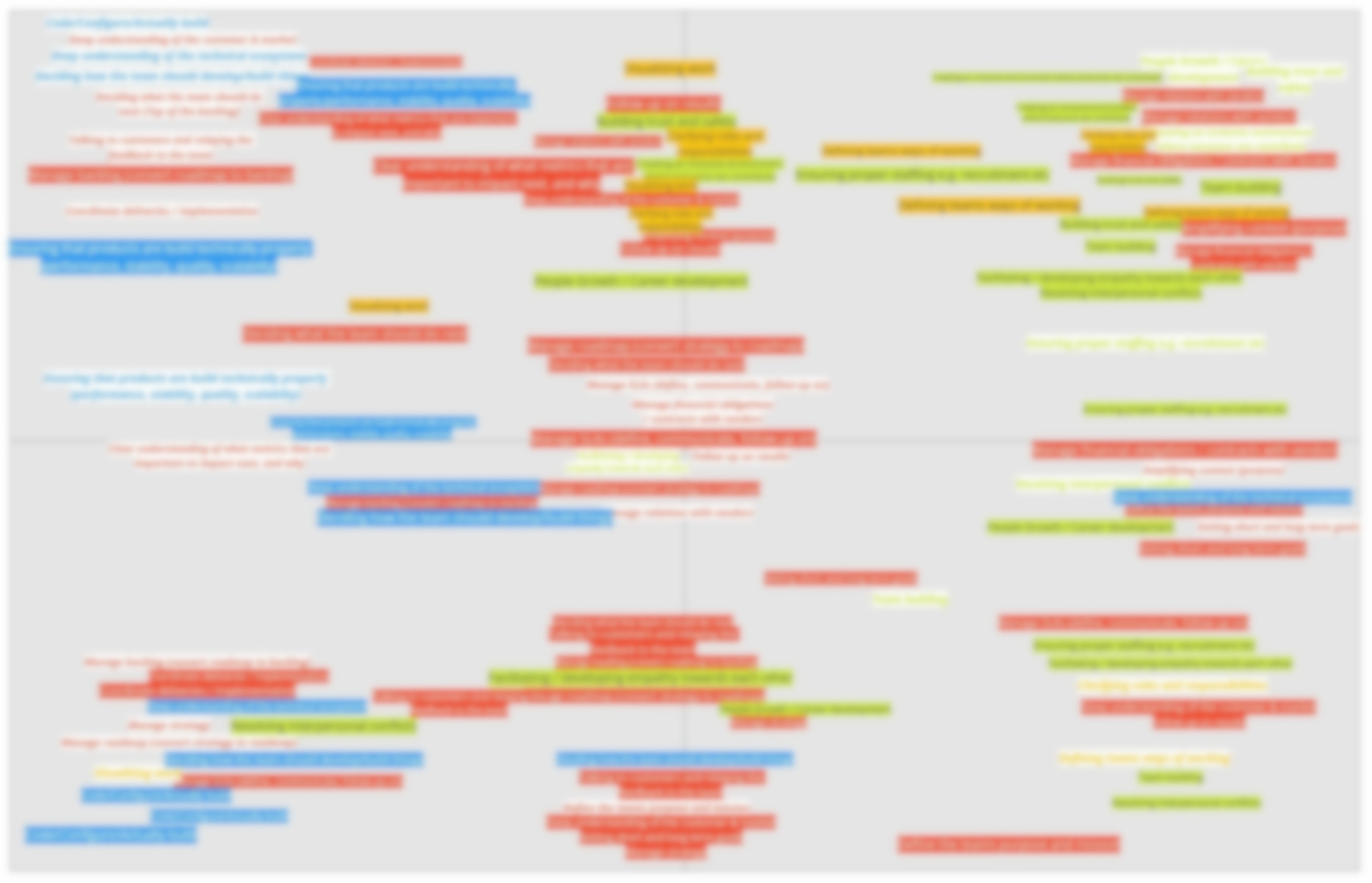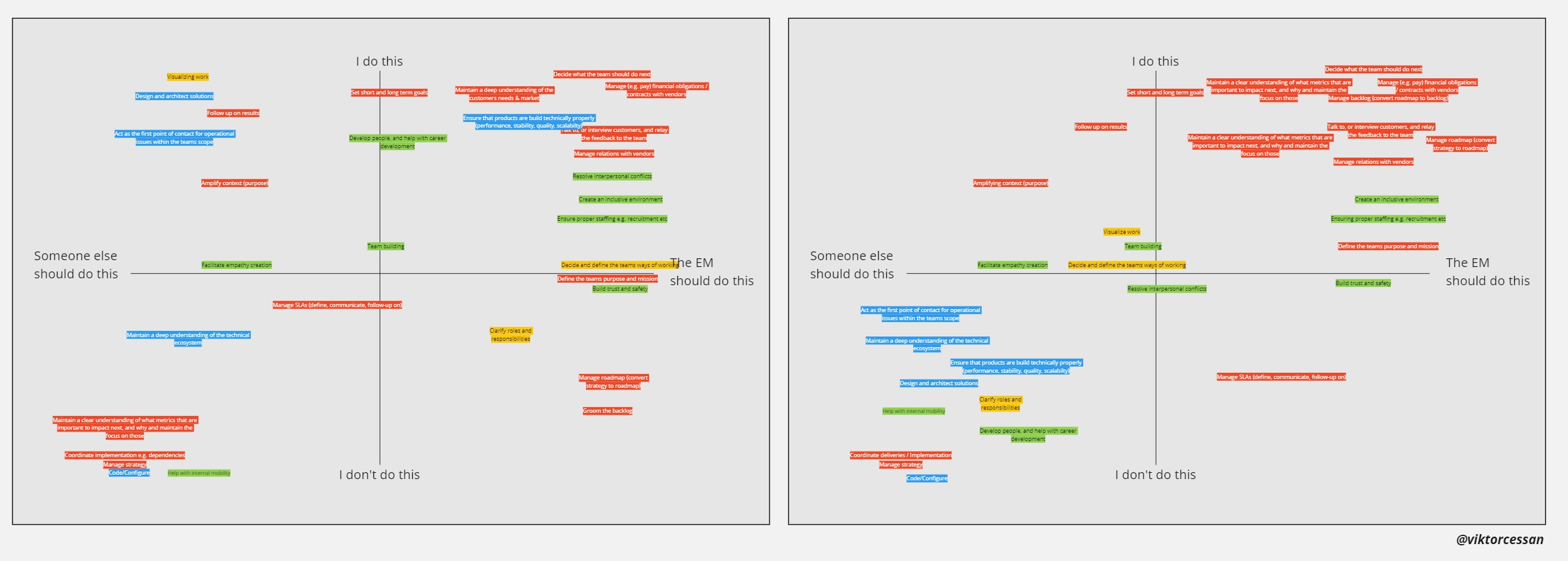The Challenge: Role Complexity and Overwhelm
Following a reorganization at one of my clients, various formal and informal leadership roles were consolidated into a new position—the Engineering Manager. This role encompassed a wide range of responsibilities, from recruitment and career development to handling expenses, internal mobility, product and value creation, collaboration and processes, and technology.
The large scale of the organization, along with technical interdependencies between teams, exacerbated the situation. Within two years, no two Engineering Managers were executing the role in the same manner. As a result, certain aspects were inevitably neglected, affecting team performance, value creation, or quality.
The Study: A Comprehensive Analysis
Instead of running a typical “Roles and responsibilities” or “RACI” exercise, I ran a study that aimed to illuminate the complexity of the role. I conducted an organizational study that mapped out how managers spent their time, what activities were undertaken, delegated, or ignored. I visualized this data:
- on an individual level so that the engineering managers got the possibility to more objectively reflect upon their situation
- at the product area level to display similarities and differences within and between product areas
- from the perspectives of Engineering Managers and Engineering Directors to illustrate differences in expectations between manager and direct.
The framework for this activity mapping was based on research by Susan Wheelan on Creating Effective Teams, Richard Hackman and Ruth Wagman’s studies on important Team Conditions [1,2,3], and the responsibilities newly added by the agile community to roles such as Product Owner, Agile Coach, and Engineering Manager. However, the mapping framework also took the clients official Engineering Managers role description into consideration because several activies were unique to this client.
Initially, based on the above, I had a long list of activities. I consolidated some based on how people spoke about their work, and I converted some activities to be about having specific knowledge. This was particularly important when the knowledge was more important than the activity e.g. “Maintain a deep understanding of the customer and market”.
Methodology
My study spanned one month and included 26 Engineering Managers and Directors. Participants mapped the activities they performed live in an interview with me, and engaged in dialog about performing the activities, how frequently they performed it, and if they believed that they should be the ones performing that activity or if it should be delegated.
This led us to identify what Engineering Managers, both individually and collectively, were:
- Actively doing and believed they should be doing
- Doing but thought was better suited for another role
- Not doing but thought they should be doing
- Not doing and believed they shouldn’t be doing
- Perceptual differences between the directors and Engineering Managers
- Positive deviations (similar environments, different outcomes) that could be replicated
Answers from one Engineering Manager.
Answers from an Engineering Director.
Findings and Impact
The study exposed large discrepancies within and across different areas, as well as between Engineering Directors and Managers. These insights facilitated discussions on redistributing work. As a result, many managers initiated conversations with their teams to ensure that crucial tasks were being handled. Workload was consequently reduced for Engineering Managers who actively engaged in this reevaluation process.
In limited instances, new Product Owner roles were introduced to further alleviate the burden. There was one Engineering Manager that shifted into the Product Owner role, and in another case a Product Owner was recruited. Some Engineering Managers were also found to be acting as technical lead, and we also found that one Engineering Director expected this.
Perpetual differences in one product area. White background indicates the expectation of the Engineering Director (activities blurred for client confidentiality reasons).
The activities of one Engineering Manager six months after conducting the study, and working with the management team to improve roles and responsibilities.
My study served as a practical step toward rationalizing and optimizing the responsibilities of Engineering Managers, ultimately leading to more efficient and effective operations within the organization.
Complex facilitation
An important detail worth noting is that I did not dictate the role descriptions, problems to be addressed, or potential solutions. I did decide on what activities to include in the framework, and on some occasions the participants asked to add some activities. This further showed the diversity of the role. My role, throughout the duration of this study and in the subsequent workshops, was to facilitate open and candid conversations. This participatory approach empowered team members and leadership alike to collaboratively explore and identify interventions that were most effective for their unique circumstances.
